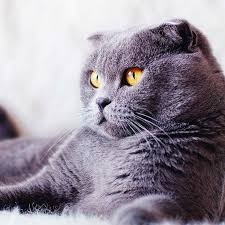
If you take a look around the various animal ad portals, you will almost be overwhelmed by the number of “breeders”. Unfortunately, among these are often “black sheep” who sell pedigree cats.
Hereunder are various variants:
- Parents (Sire and Dam) both have family trees, but the breeder is not a member of the association. Often these people buy cats from reputable breeders as pet animals (they are cheaper than breeding animals) without breeding permission, do not have them neutered and then sell kittens as pure-bred, since the parents can be proven to have a pedigree and collect money.
Shortcoming: Kitten have no pedigree, the multiplier is not subject to the guidelines of a club and can exploit the cats unnoticed by throwing them regularly without a sufficient break.
- Avoidable breeders sell “pedigree cats” without pedigree.
Without proof of pedigree, there is no proof of the possible inbreeding level, no proof that it is a purebred cat and the seller is not accountable to anyone here.
- Breeders sell kittens with fake pedigrees.
Prospective buyers should take a closer look at the family trees, internet research can often provide information about the existence of the cats in the family tree – in case of doubt, the Club should be asked.
The more information about the generations, the better. An absolute must here are birth dates (at least the Sire and Dam), stud registration numbers, colour names and cat and associated cattery names.
Responsible Breeding
 Breeders of Pedigree Cats are Club Members and Kittens have a Pedigree. For some people ‘breeders’, this is all about profit. Experience shows, however, that if you do it right, you don’t earn anything from it and rather invest more money in your breeding. This means that something important falls by the wayside with the intention of winning – to the chagrin of the cats. Inferior nutrition, rare and necessary visits to the vet or actions that are ethical, moral and often relevant to animal welfare. As MFGC, we cannot of course permanently control our breeders – everyone acts independently.
Breeders of Pedigree Cats are Club Members and Kittens have a Pedigree. For some people ‘breeders’, this is all about profit. Experience shows, however, that if you do it right, you don’t earn anything from it and rather invest more money in your breeding. This means that something important falls by the wayside with the intention of winning – to the chagrin of the cats. Inferior nutrition, rare and necessary visits to the vet or actions that are ethical, moral and often relevant to animal welfare. As MFGC, we cannot of course permanently control our breeders – everyone acts independently.
However, we follow up any problems that come to our attention in an open discussion with the breeder.
In the event of violations of our breeding and keeping guidelines, the association board is authorized to stop breeding or to terminate an obviously insensitive breeder from the association without notice. We do not close our eyes and are also active.
A responsible and reputable breeder has a specific goal in mind. Developing, improving and optimizing the breed. Whether its ears that are too big, snouts too short, the optimization of eye colour or fur texture and a further development in fur colours – all of this is his job.

Responsible breeder is an individual who has focused and put effort on one or a select few breeds and through breeding, historical research and ongoing study, mentoring relationships, club memberships, showing, raising of these breeds, becoming experts in their health, heritable defects, behavior and temperament . A responsible breeder is well suited to educate, screen potential buyers/adopters and provide follow-up support after adoption or purchase. Responsible breeders take lifetime responsibility for the animals they have bred.
As a responsible Club with International Guidelines of the WCF, we provide the rules and framework conditions, since the cat is in the foreground and the health aspect comes first.
MFGC Position
The MFGC advocates the following best practices for the responsible breeder:
 Screens cats in breeding for heritable diseases; removes affected studs and queens from breeding program. Affected cats are altered and placed as pets as long as health issues are disclosed to buyers/adopters.
Screens cats in breeding for heritable diseases; removes affected studs and queens from breeding program. Affected cats are altered and placed as pets as long as health issues are disclosed to buyers/adopters.
Has working knowledge of genetics and generally avoids inbreeding.
Keeps breeding studs and queens healthy and well socialized.
Never keeps more cats than one can provide with the highest level of care, including quality food, clean water, proper shelter from heat or cold, exercise, socialization and professional veterinary care.
Bases breeding frequency on mother’s health, age, condition and recuperative abilities.
Does not breed extremely young or old animals breed queens of more than 5/6 years of age
Does not breed more than 3 litters, from the same queen, within 2 years.
Breeds cats in their home as they are considered part of the family.
Ensures neonates are kept clean, warm, fed, vetted and with the mother until weaned; begins socialization of neonates at three weeks of age.

Ensures kittens are weaned before placement, which means they may Not Leave at less than twelve weeks of age.
Never sells kittens to a pet shop.
Screens, discusses and counsels potential guardians’ aspects of cat/breed.
Offers guidance and support to new guardians.
Provides an adoption/purchase contract in plain English that spells out breeder’s responsibilities, adopter’s responsibilities, health guarantees and return policy.
Provides reliable health, all vaccinations, deworming and accurate pedigree information. Does not do a ‘Homemade/Handwritten’ pedigree or any other papers which are not a pedigree issued by the club on behalf of the cat federation/association.
Have to register the litter with the club not exceeding 90 days from date of birth.
Have do pedigree transfers (issued from the club) to the new owner within 120 days.

